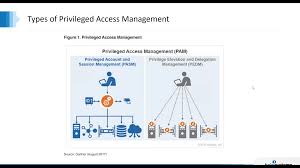In the realm of cybersecurity, one concept stands out as a sentinel against unauthorized access and data breaches: Privileged Access Management (PAM). With the increasing complexity of cyber threats and the critical importance of protecting sensitive data, PAM has emerged as a crucial tool for organizations to safeguard their digital assets. This article delves into the significance of Privileged Access Management, its advantages in fortifying cybersecurity, key considerations for its implementation, and concludes by emphasizing its indispensable role in building trust and security.
In the grand theater of cybersecurity, Privileged Access Management plays a starring role in protecting the integrity, confidentiality, and availability of organizational resources. Click this source to explore its strategic implementation and vigilant monitoring, PAM stands as an enduring testament to an organization’s commitment to guarding its digital treasures.
Understanding Privileged Access Management
Privileged Access Management (PAM) refers to the practice of controlling and monitoring the access of privileged users within an organization. Privileged users are individuals with elevated permissions, often granted to system administrators, IT personnel, and high-level executives. Their access rights enable them to make crucial changes to systems, applications, and data, making them both valuable assets and potential security risks.
PAM solutions are designed to mitigate these risks by enforcing strict access controls, monitoring privileged activities, and ensuring that access is only granted when necessary. In essence, PAM serves as the guardian of trust, ensuring that privileged users operate within defined boundaries and adhere to security protocols.
Advantages of Privileged Access Management
Minimized Risk of Insider Threats
Insider threats, whether intentional or unintentional, pose a significant risk to organizations. PAM solutions enforce the principle of least privilege, ensuring that users only have access to the resources required for their roles. This minimizes the potential damage caused by insider threats by limiting the scope of unauthorized actions.
Enhanced Data Security
Data breaches can result in severe financial and reputational damage. PAM solutions reduce the attack surface by limiting access to sensitive data and critical systems. This proactive approach significantly reduces the likelihood of data breaches and unauthorized data exposure.
Compliance and Regulatory Adherence
Many industries are subject to strict compliance regulations that mandate the protection of sensitive information. PAM solutions provide robust audit trails and reporting mechanisms, enabling organizations to demonstrate their adherence to regulatory requirements.
Real-time Monitoring and Alerting
PAM solutions offer real-time monitoring of privileged user activities. Any suspicious actions or deviations from normal behavior trigger alerts, allowing security teams to respond swiftly and mitigate potential threats.
Streamlined Access Management
PAM solutions streamline the management of privileged access. Password management, session recording, and access reviews are centralized, reducing administrative overhead and enhancing operational efficiency.
Considerations When Implementing Privileged Access Management
Scope and Prioritization
Organizations must define the scope of their PAM implementation. Which systems, applications, and accounts require privileged access controls? Prioritization is crucial, as securing critical assets should take precedence.
Integration with Existing Systems
PAM solutions should integrate seamlessly with the organization’s existing IT infrastructure. Compatibility with various operating systems, applications, and databases is essential to ensure smooth implementation.
User Training and Education
Training privileged users on the proper use of PAM tools is imperative. They should understand the importance of adhering to security protocols and the potential consequences of unauthorized actions.
Continuous Monitoring and Review
Implementing PAM is an ongoing process. Regular monitoring and periodic access reviews are necessary to ensure that privileged access remains in line with changing organizational needs and compliance requirements.
Conclusion
In an era where data breaches and cyber threats are rampant, Privileged Access Management emerges as a beacon of trust and security. By restricting and monitoring access for privileged users, PAM solutions act as the guardians of digital assets, protecting organizations from both external attacks and insider risks. As organizations strive to build a secure digital landscape, the significance of Privileged Access Management cannot be overstated. It embodies the principle of proactive security, mitigating risks before they escalate into crises. By ensuring that access to critical systems and data remains in the hands of authorized individuals, PAM strengthens the foundation of trust that underpins modern businesses.


